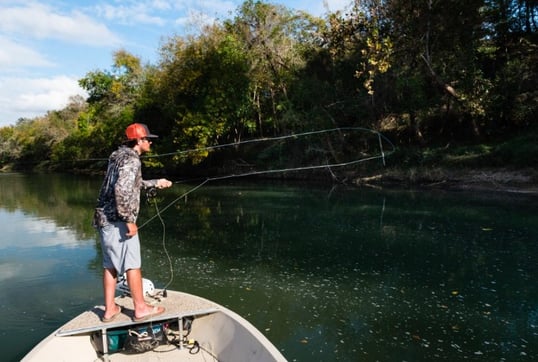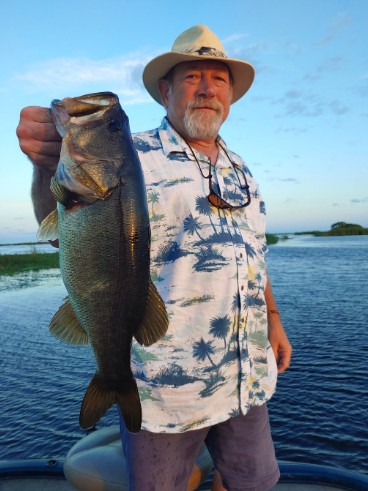We started Captain Experiences to make it easy to book fishing and hunting guides around the world. With over 1,500 Damn Good Guides, our platform makes finding and booking a trip seamless. Head here to check out our trips.
Fly fishing for bass can be a very rewarding experience. If you're just starting out, don't worry, we'll walk you through the basics of how to fly fish for bass. You will need some specialized equipment, but it's not as complicated as it may seem at first. In this blog post, we'll discuss the best fly fishing setup for bass, where to fly fish for bass in America, and the different types of bass that can be caught with a fly. We'll also provide some tips on how to fly fish for bass effectively.
Bass Fly Fishing Equipment
In order to fly fish for bass, you will need some specialized equipment. The most important piece of equipment is the rod and reel. You'll want to choose a fly rod that is specifically designed for bass fishing. In addition, you'll need a fly line and tippet that are sized appropriately for the type of fish you're targeting. Bass are relatively large fish, so you'll need a heavier fly line and tippet than you would use for trout, for example. You'll also need a selection of flies that are known to be effective at catching bass. If you're not sure what kind of flies to use, ask someone at your local tackle shop - they will be happy to help you get started.

Where to Target Bass on The Fly
Bass are one of the most common freshwater fish in North America. They live in lakes, ponds, and rivers all over the United States, so you might be able to catch them in your backyard! Bass are typically found in lakes and ponds, so that's a good place to start your search. Look for areas with lots of vegetation - bass love to hide in weeds and grasses. If you are fly fishing in a river, look for deep pools of water where the fish can hide from the current. Also keep an eye out for any logs or rocks that might provide shelter from the current. Fly fishing can be done from the shore, a small boat, or by wading into shallow water. Make sure you have plenty of space around you before you cast, so your hook doesn't get caught on anything.
There are many different types of bass that can be caught with a fly. The most common freshwater species are largemouth bass and smallmouth bass, but you can also hook white bass and striped bass in many southern states.

Fly Fishing Techniques for Bass
Actually catching a bass on the fly is super fun, but it takes a lot of practice. If you are new to the sport, definitely practice your casting form in an open area before you set out for the water. Mastering the cast is a difficult aspect of fly fishing. Once you get out on the water, we recommend using a surface fly to start. Bass are opportunistic feeders, meaning they will go for almost anything they see. This means that a number of flies will work for catching bass, including both surface and subsurface flies. With a surface fly, let it float for a second before you start the retrieve. This gives bass time to notice the fly and track it before they strike. They can’t help but be tempted!
Another super helpful tip is how to set the hook once you get a bite. Hooking bass on the fly is unlike other forms of fishing because you don’t want to set the hook with the conventional upwards jerk. In fact, it’s best to keep your rod tip pointed down and apply side pressure. If you jerk upwards, you might lose the bass.
Milo Kashey
Updated on July 31, 2023

January 19, 2021

March 8, 2022

December 10, 2021

August 1, 2022

June 3, 2021
Related Articles
August 1, 2022
July 22, 2022
August 1, 2022


